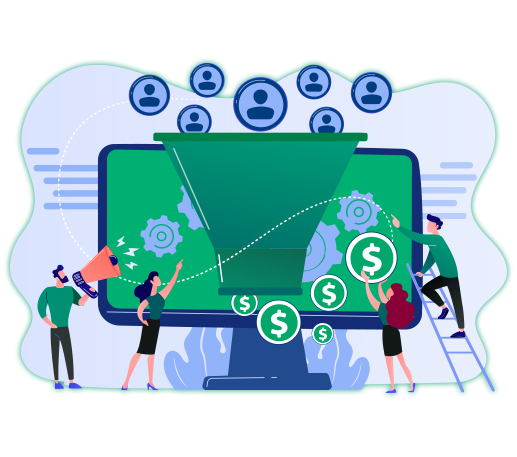What Are The Top Monetization Models For Digital Magazines!

Digital magazines have exploded in popularity over the past decade. Unlike their print counterparts, digital magazines can be updated frequently, distributed globally at little cost, and enhanced through multimedia and interactivity. However, monetizing digital content remains a challenge for publishers.
Whereas print magazines rely on both newsstand and subscription sales for revenue, digital magazines have far fewer sources of income. Print advertising rates are also significantly higher than digital ad rates. As more readers move from print to digital, publishers are struggling to replace lost revenue. Developing smart monetization strategies is critical for the survival of digital magazines.
This article will examine the top monetization models for digital magazines.
1. Subscriptions
Magazines have traditionally relied on subscription revenue as a key source of income. This model has transitioned successfully to the digital landscape.
Many online magazines offer monthly or annual subscription options, giving readers full access to all content on the site. Subscription fees are typically very affordable. Some magazines have different tiers of subscriptions at varying price points, with higher-level subscriptions including premium content, early access to issues, and other exclusive benefits.
Subscribers not only gain unlimited reading access, but they are also supporting the continued production of quality content. The predictable, recurring revenue stream from subscriptions allows magazines to plan out budgets and operate sustainably. This model incentivizes magazines to continually create compelling content that engages readers and provides value worth the subscription cost.
Subscriptions work well for readers who frequently read a particular magazine and want to conveniently access the content. It removes the hassle of having to purchase individual issues or articles.
Many online magazines restrict some or all of their content to paid subscribers only. This premium subscriber-only content acts as an additional incentive for readers to subscribe and provides added value over free sites. Developing exclusive stories, analysis, tools, and multimedia for subscribers can drive both sign-ups and retention.
2. Advertising
Advertising is a major source of revenue for digital magazines. Unlike print magazines that are limited to the ads printed on the pages, online magazines have a variety of digital advertising options:
Display Ads
Banner ads, skyscrapers, and other standard display ad units can be placed throughout the site or in specific sections. Display ads are easy to implement through major ad networks like Google AdSense. Revenues are based on impressions, clicks, or conversions.
Native Ads
Native ads blend seamlessly into the page content rather than sticking out like display ads. For example, a sponsored article may be nestled among other articles, or a brand may sponsor a regular column. Native ads aim to provide a less disruptive ad experience.
Sponsored Content
Sponsors may pay for certain articles or content to be created highlighting their brand or products. These articles allow brands to connect with audiences through high-quality content rather than traditional ads.
Targeted Ads
Digital magazines can serve highly targeted ads by collecting user data such as demographics, interests, and browsing history. Advertisers can identify specific audience segments to display relevant, engaging ads. Targeted ads tend to have higher clickthrough and conversion rates, leading to increased revenues.
The wide range of digital ad options allows magazines to effectively monetize through advertising while providing a tailored ad experience for their readers. As ad targeting and segmentation improve, advertising revenues are likely to keep growing for digital magazines.
3. E-commerce
With digital content, magazines can include affiliate links directly within articles. For example, if a beauty magazine writes about a new moisturizer, they can include a link to buy that product on Amazon and receive a small commission on any sales. This creates a seamless experience for readers to learn about and purchase the products mentioned.
In addition to affiliate links, magazines can create their own branded merchandise to sell. This includes t-shirts, mugs, bags, and other items featuring the magazine’s logo and branding. These physical items allow loyal readers to publicly display their support. E-commerce stores can be hosted directly on the magazine’s website. When featured in articles and promoted on social media, branded merchandise provides an additional revenue stream for digital magazines.
4. Sponsored Content
Sponsored content has emerged as a popular monetization strategy for digital magazines in recent years. This involves partnering with brands to create custom content that aligns with the brand’s messaging while still being relevant to the publication’s audience.
Brand partnerships typically involve the magazine producing sponsored articles, videos, or other multimedia content that is either hosted on the publication’s site or social media channels. The sponsoring brand will pay a negotiated fee to the publication in exchange for producing this content.
From the brand’s perspective, sponsored content allows them to connect with the magazine’s existing audience organically. Rather than blatant advertising, it appears as editorial content that readers are more likely to engage with. For the magazine, it provides a new revenue stream that is often more lucrative than traditional digital advertising.
There are a few keys to doing sponsored content well:
– The content should still align editorially with the publication. It can’t just feel like an ad or readers will tune it out.
– It needs to be clearly labeled as sponsored to maintain transparency. This is usually done with a disclaimer like “Presented by [Brand]” at the top.
– The magazine’s editorial voice and style should be maintained. The content is designed to blend into the normal flow of articles and videos.
– Brands are typically given input and approval, but the publication ultimately controls the content. There is usually an agreement to ensure it meets certain guidelines.
Done right, sponsored content allows magazines to capitalize on the appeal and trust of their brand while generating revenue through custom campaigns. As native advertising grows, it has become an important part of the mix for monetizing digital content.
5. Premium Access
Premium or paid access typically gives readers access to additional, exclusive content beyond what’s available to non-paying users. This allows digital magazines to segment their content and provide extra value to paying subscribers.
Some common premium access models include:
– Access to archives or back issues. Readers must pay to read older articles and issues. This provides recurring revenue as new issues are added to the archives over time.
– Ad-free reading experience. Subscribers can pay to avoid seeing ads. This is attractive to readers who find ads distracting or intrusive.
– Early access. Paying users get new issues or articles before the general public. This caters to super fans who want content as soon as it’s available.
– Exclusive stories or extras. Some in-depth features, interviews, or bonus content are only accessible to paid members. This makes subscribers feel special and provides more value.
– Newsletters or email perks. Subscribers may get exclusive newsletters with extra insights or discounts. Email can act as a gateway to push paying users towards premium content.
– Multimedia extras. Paywalled content may include extra podcasts, videos, datasets, or visualizations that complement the articles. This makes premium content more interactive and engaging.
– Member forums. Paid users may get access to private community forums for discussion. This allows more connection with the publication and other fans.
– Discounts and deals. Premium members may get special offers like discounted event tickets, merchandise, or partner products. These extra perks add more perceived value.
With so much free content online, premium paywalls incentivize recurring revenue from loyal fans who want to go deeper or get extra benefits. The key is structuring premium tiers to feel like an exclusive membership with tangible added value.
